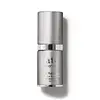What's inside
What's inside
 Key Ingredients
Key Ingredients

 Benefits
Benefits

 Concerns
Concerns

 Ingredients Side-by-side
Ingredients Side-by-side

Water
Skin ConditioningCyclopentasiloxane
EmollientC12-15 Alkyl Benzoate
AntimicrobialPhenyl Trimethicone
Skin ConditioningGlycerin
HumectantCyclotetrasiloxane
EmollientPPG-12/Smdi Copolymer
EmollientTheobroma Grandiflorum Seed Butter
Skin ConditioningCetyl PEG/PPG-10/1 Dimethicone
EmulsifyingDimethicone
EmollientMicrocrystalline Wax
Emulsion StabilisingSodium Chloride
MaskingPolysilicone-11
Acetyl Hexapeptide-8
HumectantCucumis Sativus Fruit Extract
EmollientTribehenin
EmollientCetyl Esters
EmollientSodium PCA
HumectantHydrolyzed Rice Protein
Skin ConditioningCeramide Ng
Skin ConditioningPhospholipids
Skin ConditioningTrehalose
HumectantGlycine Soja Protein
EmulsifyingTocopheryl Acetate
AntioxidantGlycine
BufferingLysine
Skin ConditioningPalmitoyl Hexapeptide-12
Skin ConditioningPalmitoyl Tripeptide-1
Skin ConditioningPalmitoyl Tetrapeptide-7
Skin ConditioningAscorbyl Palmitate
AntioxidantPEG-10 Phytosterol
EmulsifyingRetinyl Palmitate
Skin ConditioningProline
Skin ConditioningButylene Glycol
HumectantDimethiconol
EmollientEthylhexyl Cocoate
EmollientPEG/PPG-18/18 Dimethicone
EmulsifyingUrea
BufferingEthylhexylglycerin
Skin ConditioningCaprylyl Glycol
EmollientCarbomer
Emulsion StabilisingHexylene Glycol
EmulsifyingDipeptide Diaminobutyroyl Benzylamide Diacetate
Skin ConditioningHydrogenated Lecithin
EmulsifyingHydroxycetyl Hydroxyethyl Dimonium Chloride
Polysorbate 20
EmulsifyingSuperoxide Dismutase
AntioxidantXanthan Gum
EmulsifyingSalicylic Acid
MaskingSorbic Acid
PreservativeCitric Acid
BufferingLecithin
EmollientGlycosphingolipids
EmollientPhenoxyethanol
PreservativeSodium Benzoate
MaskingPotassium Sorbate
PreservativeSodium Dextran Sulfate
Gel FormingPentaerythrityl Tetra-Di-T-Butyl Hydroxyhydrocinnamate
AntioxidantWater, Cyclopentasiloxane, C12-15 Alkyl Benzoate, Phenyl Trimethicone, Glycerin, Cyclotetrasiloxane, PPG-12/Smdi Copolymer, Theobroma Grandiflorum Seed Butter, Cetyl PEG/PPG-10/1 Dimethicone, Dimethicone, Microcrystalline Wax, Sodium Chloride, Polysilicone-11, Acetyl Hexapeptide-8, Cucumis Sativus Fruit Extract, Tribehenin, Cetyl Esters, Sodium PCA, Hydrolyzed Rice Protein, Ceramide Ng, Phospholipids, Trehalose, Glycine Soja Protein, Tocopheryl Acetate, Glycine, Lysine, Palmitoyl Hexapeptide-12, Palmitoyl Tripeptide-1, Palmitoyl Tetrapeptide-7, Ascorbyl Palmitate, PEG-10 Phytosterol, Retinyl Palmitate, Proline, Butylene Glycol, Dimethiconol, Ethylhexyl Cocoate, PEG/PPG-18/18 Dimethicone, Urea, Ethylhexylglycerin, Caprylyl Glycol, Carbomer, Hexylene Glycol, Dipeptide Diaminobutyroyl Benzylamide Diacetate, Hydrogenated Lecithin, Hydroxycetyl Hydroxyethyl Dimonium Chloride, Polysorbate 20, Superoxide Dismutase, Xanthan Gum, Salicylic Acid, Sorbic Acid, Citric Acid, Lecithin, Glycosphingolipids, Phenoxyethanol, Sodium Benzoate, Potassium Sorbate, Sodium Dextran Sulfate, Pentaerythrityl Tetra-Di-T-Butyl Hydroxyhydrocinnamate
Water
Skin ConditioningGlycerin
HumectantLactose
HumectantC12-15 Alkyl Benzoate
AntimicrobialCetearyl Ethylhexanoate
EmollientPEG-100 Stearate
Glyceryl Stearate
EmollientPEG-8
HumectantStearyl Alcohol
EmollientTromethamine
BufferingPanthenol
Skin ConditioningCarbomer
Emulsion StabilisingIsopropyl Myristate
EmollientMethylparaben
PreservativeDisodium EDTA
BHT
AntioxidantPropylparaben
PreservativeMagnesium Aspartate
Skin ConditioningZinc Gluconate
Skin ConditioningChlorhexidine Digluconate
AntimicrobialRetinol
Skin ConditioningPolysorbate 20
EmulsifyingCopper Gluconate
Skin ConditioningWater, Glycerin, Lactose, C12-15 Alkyl Benzoate, Cetearyl Ethylhexanoate, PEG-100 Stearate, Glyceryl Stearate, PEG-8, Stearyl Alcohol, Tromethamine, Panthenol, Carbomer, Isopropyl Myristate, Methylparaben, Disodium EDTA, BHT, Propylparaben, Magnesium Aspartate, Zinc Gluconate, Chlorhexidine Digluconate, Retinol, Polysorbate 20, Copper Gluconate
 Reviews
Reviews

Ingredients Explained
These ingredients are found in both products.
Ingredients higher up in an ingredient list are typically present in a larger amount.
C12-15 Alkyl Benzoate is made up of Benzoic Acid and long chain alcohols. It has a low molecular weight.
C12-15 Alkyl Benzoate is an emollient and texture enhancer. Due to its solubility, it is often used in sunscreens to help evenly distribute active ingredients.
As an emollient, C12-15 Alkyl Benzoate helps soften and hydrate your skin. Emollients create a film on your skin that traps moisture within.
This ingredient has been reported to cause eye irritation.
Learn more about C12-15 Alkyl BenzoateCarbomer is a polymer of acrylic acid. Its main role is to create a gel consistency.
A high amount of carbomer can cause pilling or balling up of products. Don't worry, most products contain 1% or less of carbomer.
Glycerin is already naturally found in your skin. It helps moisturize and protect your skin.
A study from 2016 found glycerin to be more effective as a humectant than AHAs and hyaluronic acid.
As a humectant, it helps the skin stay hydrated by pulling moisture to your skin. The low molecular weight of glycerin allows it to pull moisture into the deeper layers of your skin.
Hydrated skin improves your skin barrier; Your skin barrier helps protect against irritants and bacteria.
Glycerin has also been found to have antimicrobial and antiviral properties. Due to these properties, glycerin is often used in wound and burn treatments.
In cosmetics, glycerin is usually derived from plants such as soybean or palm. However, it can also be sourced from animals, such as tallow or animal fat.
This ingredient is organic, colorless, odorless, and non-toxic.
Glycerin is the name for this ingredient in American English. British English uses Glycerol/Glycerine.
Learn more about GlycerinPolysorbate 20 is made by combining ethoxylation of sorbitan, ethylene oxide, and lauric acid. It is a mild cleansing agent, surfactant, and emulsifier.
As a surfactant, it helps collect dirt and oils for washing. Emulsifiers prevent oils and water from separating.
Polysorbate 20 also adds scent to a product. Since it is made using sorbitol, it has a sweet scent. Sorbitol can also be found in fruits such as apples and peaches.
The lauric acid used to create Polysorbate 20 is often derived from coconuts.
Polysorbate 20 may not be fungal acne safe.
Learn more about Polysorbate 20Water. It's the most common cosmetic ingredient of all. You'll usually see it at the top of ingredient lists, meaning that it makes up the largest part of the product.
So why is it so popular? Water most often acts as a solvent - this means that it helps dissolve other ingredients into the formulation.
You'll also recognize water as that liquid we all need to stay alive. If you see this, drink a glass of water. Stay hydrated!
Learn more about Water